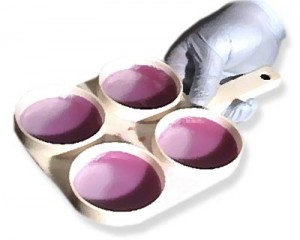For my last passion post ever, I thought that I should fulfill my civic duty and discuss part of the wonderful diversity that takes place at our beloved Pennsylvania State University. As you may or may not know, Penn State (originally called the Farmers’ High School) was founded in 1855 as Pennsylvania’s land grant institution. On of main missions of the land grant universities was to provide higher education to students who planned on pursuing a career as a farmer or another agricultural industry profession. This mission continues to be reflected through our university, as our College of Agricultural Sciences is one of the best in the nation.
One of the largest components of the College of Ag is the Animal Science Department and, within that, the Dairy Science program. Did you know that Penn State University actually has cows on campus? Right across the road from Beaver Stadium, you can find the Penn State Dairy Complex, which houses the university’s herd of Holstein cattle. The facility contains a milking herd of about 220 cattle in addition to calves, heifers, and dry cows. The milk produced by these cows is used to make the dairy products at the beloved Berkey Creamery and the rest is sold to Land O’Lakes cooperative. Some of the cattle at the facility are used in university research studies. The Penn State dairy herd also serves as an interactive learning tool for many of the Animal Science (AN SC) courses offered at University Park. In addition, many students work at the dairy barns to care for the cattle, and some students even live in special dorms at the dairy complex.
You can find out more about the dairy complex by following this link: http://animalscience.psu.edu/facilities/dairy-barns
In addition to the dairy complex, dairy cattle also play an important role at the university through the Penn State Dairy Science Club (DSCI). This club is open to any University Park student with an interest in dairy cattle. The club is involved in many different activities, including the Nittany Lion Fall Classic (a Holstein sale that is a major fundraiser for the club), the Holiday Cheesebox Sale (another big fundraiser), domestic and international spring trips, and Dairy Expo (a dairy showmanship contest/learning opportunity open to all University Park students). We also crown the Penn State Dairy Princess every year, who works to promote the dairy industry to the University Park and State College communities. Additionally, Penn State has two Collegiate Dairy Judging Teams that compete nationally at competitions at the World Dairy Expo (Madison, Wisconsin), the All-American Dairy Show (Harrisburg, PA), the Eastern States Exposition (West Springfield, Massachusetts), and the North American International Livestock Exposition (Louisville, Kentucky).
The Pennsylvania State University provides students with many different learning opportunities. The following is a list of dairy-related courses that the university offers.
AN SC 100 (GN): Introduction to Animal Industries (3)
AN SC 201: Animal Science (4)
AN SC 225: Introduction to Dairy Judging (1)
AN SC 310: Dairy Cattle Production & Management (3)
AN SC 322/322H: Principles of Animal Breeding (3)
AN SC 350: Dairy Problem Solving (2)
AN SC 410: Advanced Dairy Herd Management (4)
AN SC 422: Dairy Cattle Evaluation & Selection (3)
AN SC 426: Advanced Judging & Selection [Dairy Judging Team] (2)
AN SC 427: Milk Secretion (3)
AN SC 432: Techniques in Cattle Reproduction (1)
AN SC 450: Dairy Farm Management Systems (3)
AN SC 451: Dairy Systems Analysis (1-2)
You can find more detailed descriptions of these courses in the Undergraduate Bulletin: http://bulletins.psu.edu/undergrad/courses/A/AN%20SC/.


















